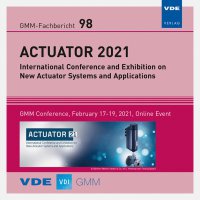Generating Homogeneous Gas Mixtures by Using Acoustic Waves
Conference: ACTUATOR - International Conference and Exhibition on New Actuator Systems and Applications 2021
02/17/2021 - 02/19/2021 at Online
Proceedings: GMM-Fb. 98: ACTUATOR 2021
Pages: 4Language: englishTyp: PDF
Authors:
Krempel, Sandro; Seidel, Nico; Tietze, Sabrina (Coburg University of Applied Sciences and Arts, Coburg, Germany)
Drese, Klaus S.
Abstract:
The demand for homogeneous gas mixtures with defined concentration ratios is increasing in the diverse branches of industry. In the production of these gas mixtures, the most important factors are how the gases are combined and, above all, how homogeneously they are mixed. Currently, gas mixtures are produced with purely mechanical gas mixers, which are based on the principle of installations in the mixing chambers or on mixing with valve systems. The approach presented here is based on the mixing of two gases without additional mechanical parts or valves. The mixing is done exclusively by means of acoustic sound waves from outside the gas mixing chamber and can also be applied to static stationary gases. In the work presented here frequencies of around 1 MHz are used. Two different concepts are considered for this purpose. In the first variant, a piezoelectric transducer (30 mm x 10 mm x 1 mm) is mounted on a thin copper plate (width: 30 mm; thickness: 1 mm) outside of the chamber. The copper plate itself is passed through the gas chamber. The generated sound wave propagates into the chamber as a guided acoustic wave on the plate. The guided acoustic wave ensures a continuous oscillation of the complete metal plate. The excitation frequency used here was 1.5 MHz with an excitation voltage of 200 VPP as well. In the second variant, a piezoelectric transducer (diameter 20 mm x 1.25 mm) is located directly on the outside of the gas mixing chamber and is operated at a frequency of 990 kHz and a voltage of 200 VPP. The sound is radiated as bulk sound wave directly into the chamber via the vessel wall (PMMA). For the experiments, air (with smoke) and helium are used as gases. The smoke is first blown in and the helium then flows in as an easily separable second gas layer over it. While the influence of the bulk wave and its interaction with the gas is immediately visible when the transducer is switched on, the mixing process on the metal plate is more gradual due to guided waves (significant change only after 40 s). In both cases, however, mixing is clearly visible. Mixing due to temperature influences can be ruled out in both tests. Both variants could always be used where there is static gas mixing inside closed containers or where this should be maintained.


